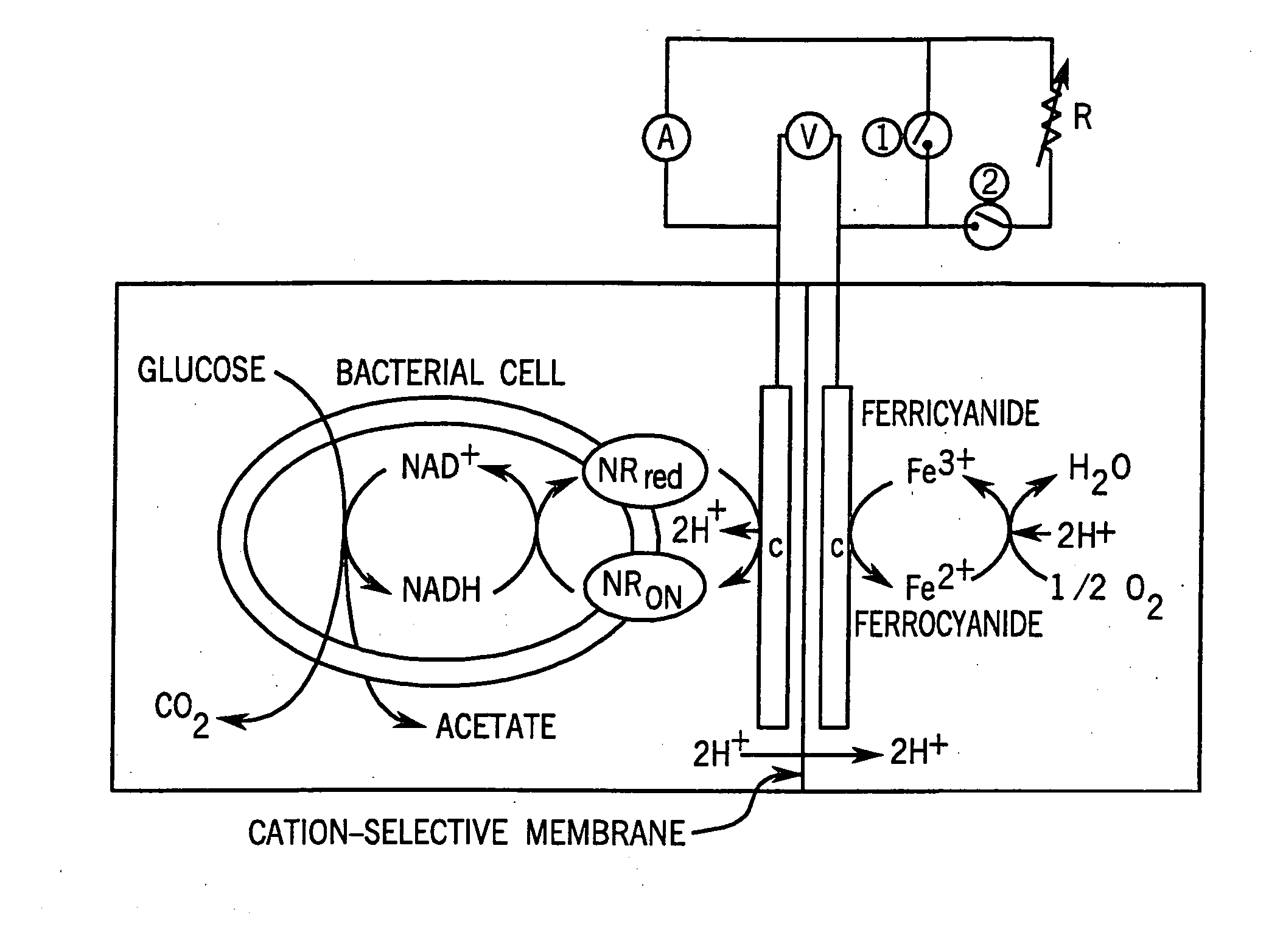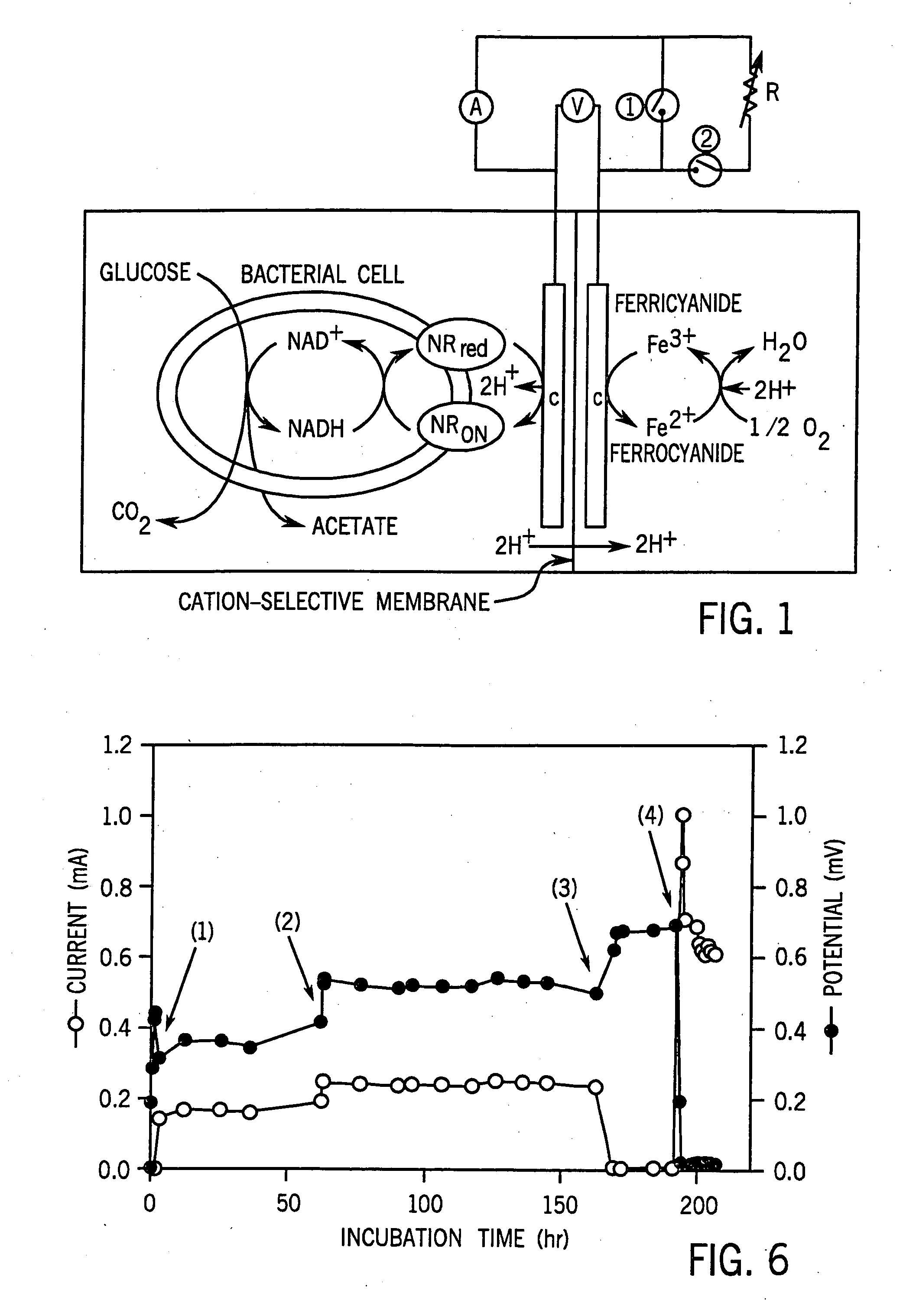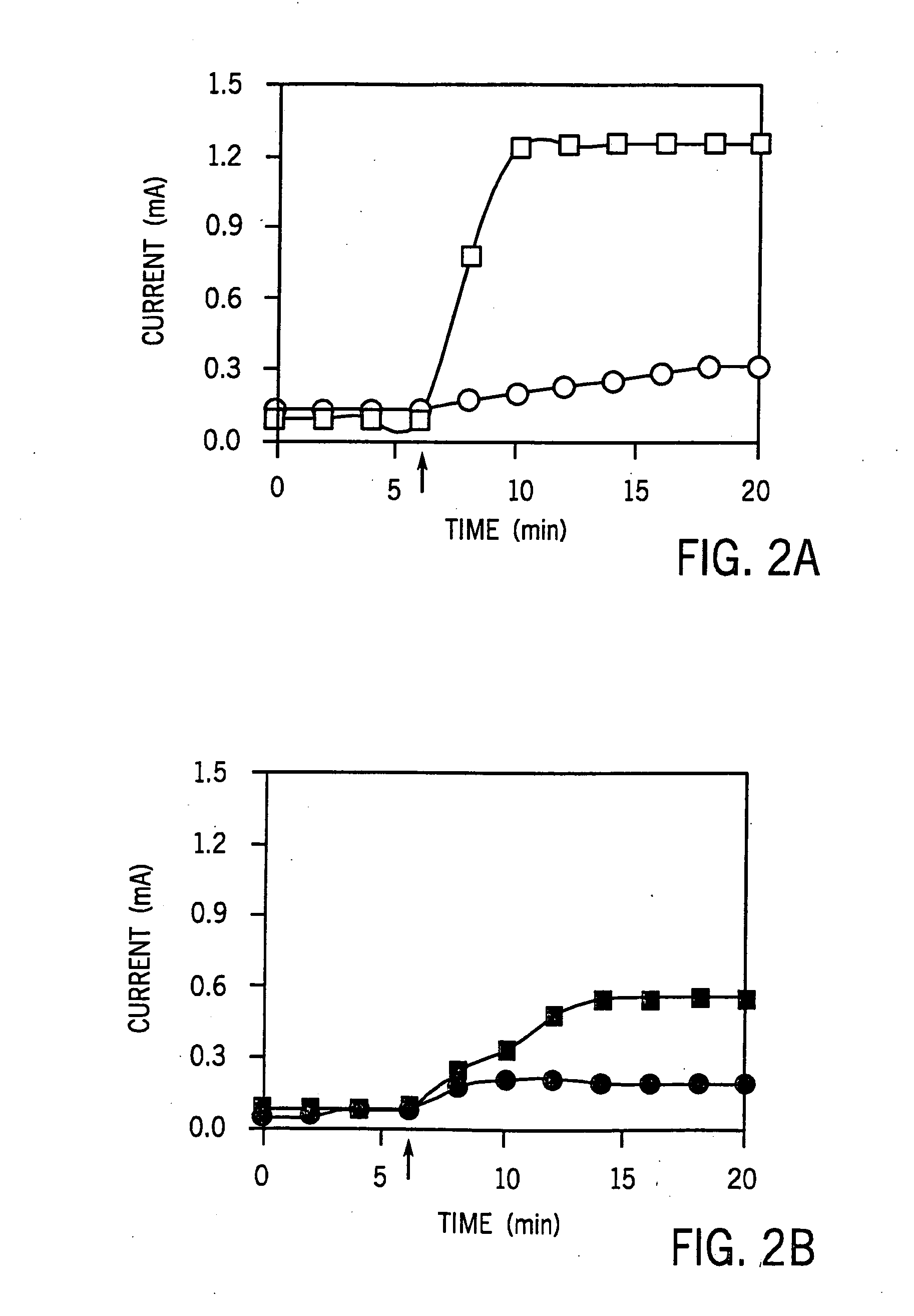Electrochemical methods for generation of a biological proton motive force and pyridine nucleotide cofactor regeneration
- Summary
- Abstract
- Description
- Claims
- Application Information
AI Technical Summary
Benefits of technology
Problems solved by technology
Method used
Image
Examples
example 1
Electrically Reduced Neutral Red Promotes the Reduction of Fumerate to Succinic Acid
[0080] Chemicals and Reproducibility of Results
[0081] All chemicals were reagent grade and gases were purchased from AGA Chemicals (Cleveland, Ohio, USA). All individual experiments were repeated two to three times with identical results.
Electrochemical Bioreactor Systems
[0082] The ECB system I (40 ml working volume) was used for enzymatic and chemical reduction tests and ECB system II (300 ml working volume) was used for electrical-dependent cultivation of cells. The ECB systems, specially designed for maintaining anaerobic conditions and for growing bacteria, were made from Pyrex glass by the MSU Chemistry Department, East Lansing, Mich., USA. The ECB system was separated into anode and cathode compartments by a cation selective membrane septum (diameter [φ]=22 mm for type I and [φ]=64 mm for type II) (Nafion, Electrosynthesis, Lamcosta, N.Y.); 3.5 Ωcm−2 in 0.25 N NaOH). Chemicals and metaboli...
example 2
Bioreduction of Ketones to Alcohols
Introduction
[0122] Bioreductions of ketones require either NADH or NADPH as a co-factor and the difficulty in implementing an efficient and economical recycling system has restricted large scale applications to whole cell processes. Specifically, we are interested in asymmetric bioreduction of a β-tetralone to its corresponding (S)-alcohol by the yeast Trichosporon capitatum. The alcohol, β-tetralol, is subsequently used in the synthesis of MK-0499, a very potent potassium channel blocker which mediates polarization of cardiac tissues.
[0123] Recently, we have developed an electrochemical co-factor recycling technology using an electrochemical bioreactor system (described above). The technology was examined and demonstrated in fermentation processes producing organic acids and in reducing CO2 to CH4 with an activated sludge, resulting in a 20-40% increase in the end product concentration.
[0124] We have evaluated the electrochemical co-factor (N...
PUM
 Login to View More
Login to View More Abstract
Description
Claims
Application Information
 Login to View More
Login to View More - R&D
- Intellectual Property
- Life Sciences
- Materials
- Tech Scout
- Unparalleled Data Quality
- Higher Quality Content
- 60% Fewer Hallucinations
Browse by: Latest US Patents, China's latest patents, Technical Efficacy Thesaurus, Application Domain, Technology Topic, Popular Technical Reports.
© 2025 PatSnap. All rights reserved.Legal|Privacy policy|Modern Slavery Act Transparency Statement|Sitemap|About US| Contact US: help@patsnap.com



